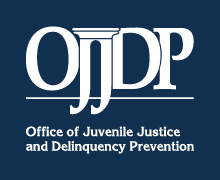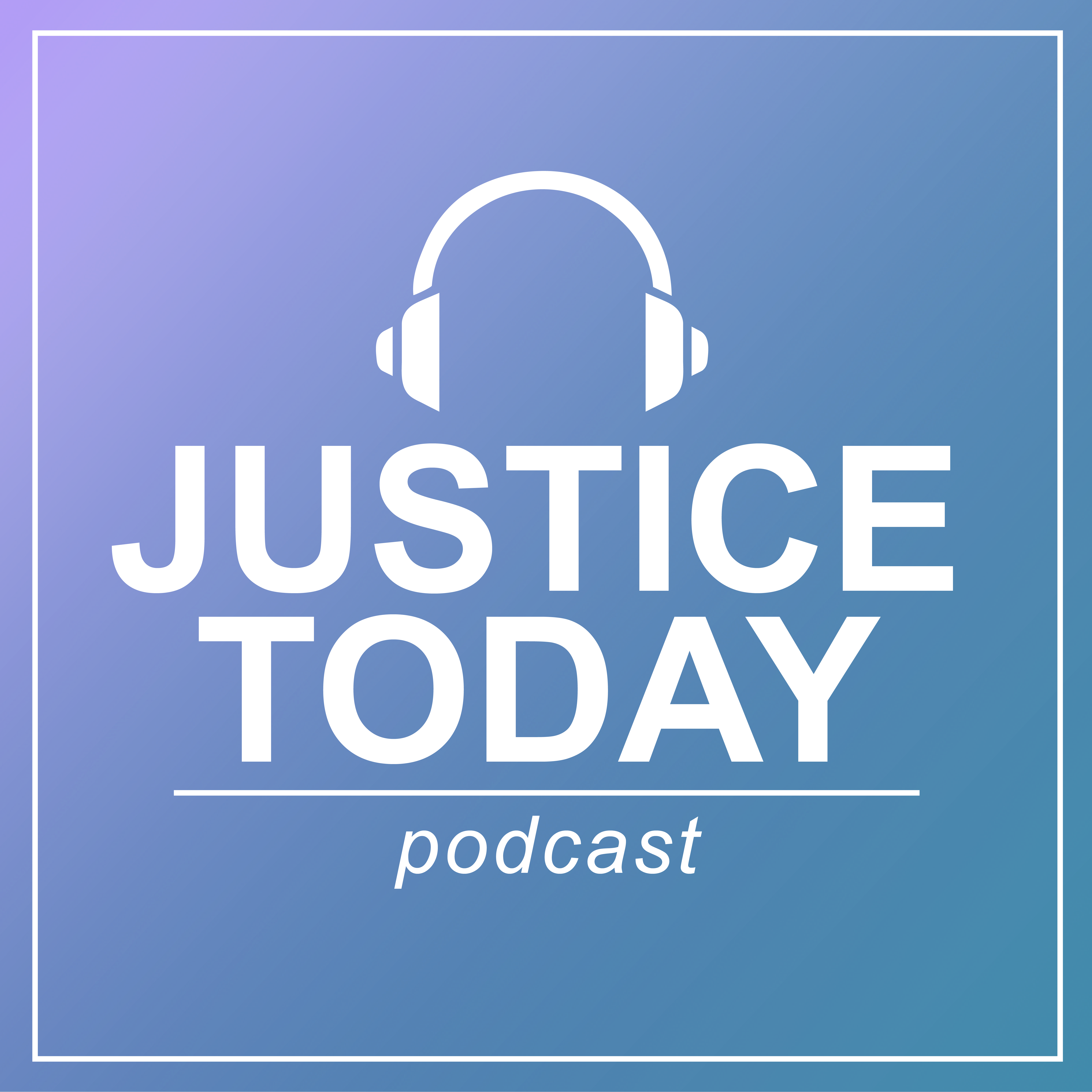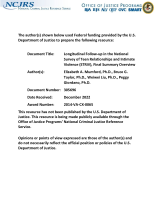Exposure to violence
The Role of Violence Within and Across Self-Identified Gang Youth
Defining and Studying Elder Abuse Polyvictimization
NIJ Social Science Analyst Yunsoo Park shares her knowledge about elder abuse, a widespread issue in the U.S. and around the world, particularly polyvictimization — the experience of a range of different types of abuse and maltreatment. As much as 11% of community-residing older adults experienced some form of abuse or mistreatment in the past year. Yunsoo discusses risk factors, difficulties in defining and studying elder abuse polyvictimization, and strategies for intervention and prevention. Stacy Lee Reynolds, a Communications Assistant with NIJ, hosts.
The Impact of Intimate Partner Violence Exposure in Adolescence and Emerging Adulthood: A Developmental Psychopathology Approach
Longitudinal Follow-up in the National Survey of Teen Relationships and Intimate Violence (STRiV), Final Summary Overview
The Effectiveness of the Say-Something Anonymous Reporting System in Preventing School Violence: A Cluster Randomized Control Trial in 19 Middle Schools
The Adaptation and Evaluation of the Fourth R Youth Dating Violence Curriculum for Indigenous Communities
A Teacher-Delivered Intervention for Adolescents Exposed to Ongoing and Intense Traumatic War-Related Stress: A Quasi-Randomized Controlled Study
Family Instability and Exposure to Violence in the Early Life Course
Effects of Physical and Emotional Child Abuse and Its Chronicity on Crime Into Adulthood
Do Gender and Exposure to Interparental Violence Moderate the Stability of Teen Dating Violence?: Latent Transition Analysis
The influence of exposure to violence on adolescents' physical aggression: The protective influence of peers
Minority and Immigrant Youth Exposure to Community Violence: The Differential Effects of Family Management and Peers
Diverse Long-Term Effects of Childhood Exposure to Intimate Partner Violence: Development of Externalizing Behaviors in Males and Females
Exposure to Violence and Nonviolent Life Stressors and Their Relations to Trauma-Related Distress and Problem Behaviors Among Urban Early Adolescents
Family Violence, Sibling, and Peer Aggression During Adolescence: Associations With Behavioral Health Outcomes
Health-Related Quality of Life among Adolescents as a Function of Victimization, other Adversities, and Strengths
Residential mobility, mental health, and community violence exposure among Somali refugees and immigrants in North America
Bidirectional Relations between Witnessing Violence, Victimization, Life Events, and Physical Aggression among Adolescents in Urban Schools
Understanding the Buffering Effects of Protective Factors on the Relationship between Adverse Childhood Experiences and Teen Dating Violence Perpetration
Exposure to parental and community violence and the relationship to bullying perpetration and victimization among early adolescents: A parallel process growth mixture latent transition analysis
Child Trauma Response Team (CTRT): Pilot Program
Polyvictimization, Emotion Dysregulation, Symptoms of Posttraumatic Stress Disorder, and Behavioral Health Problems Among Justice-Involved Youth: a Latent Class Analysis
Preparing for and Responding to Threats and Violence - Breakout Session, NIJ Virtual Conference on School Safety
On February 16-18, 2021, the National Institute of Justice hosted the Virtual Conference on School Safety: Bridging Research to Practice to Safeguard Our Schools. This video includes the following presentations:
See the YouTube Terms of Service and Google Privacy Policy





